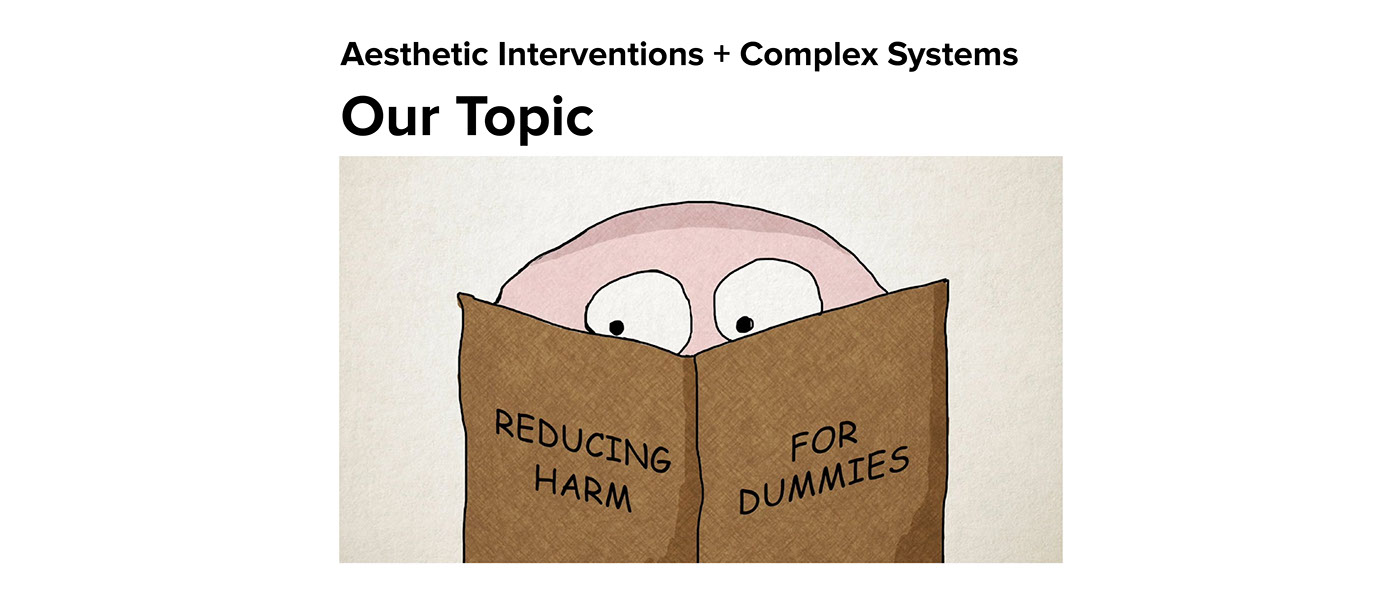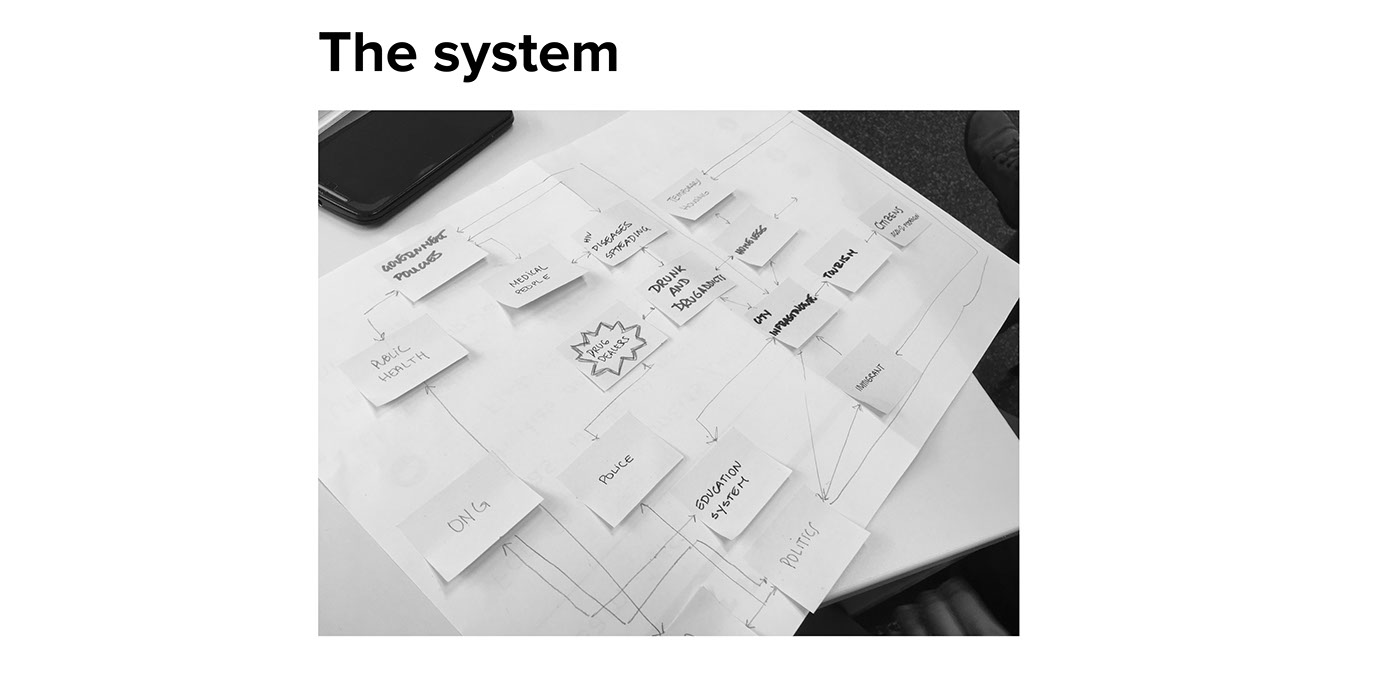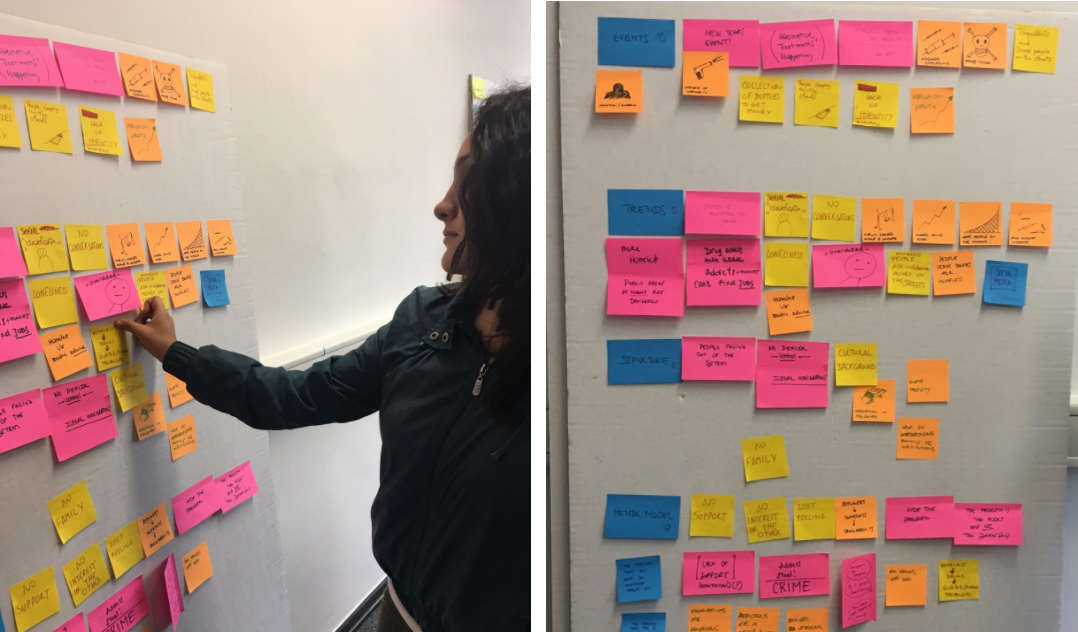

Sparking Systems
Change through Aesthetic Disruption
Short Term Project SS 2017 - Harm Reduction Center Approach
The aim of this project was to provoke deep reflection on the underlying assumptions of the systems we participate in by engaging people's senses in tangible and experiential design interventions.

Aesthetic Interventions
Aesthetic knowledge is “What we know about...a situation through our bodily senses of, sight, sound, taste, touch and smell”...
(Stephens & Bolans - 2014)


We decided to make an approach on the mental models associated with drug addictions and how public systems such as harm reduction centers and needle exchange programs might be perceived and judge through that lenses by its social context.



Our system of interest was -Harm Reduction Centers - we were very curious about the how Harm Reduction Centers are perceived by Cologne citizens.
We wanted to understand the four layers associated with this topic (events, trends, structure and mental models) from where we could start planning our aesthetical intervention.

EVENTS.
Bottles Recollection, immigration, people sleeping on the streets, population growth.
TRENDS.
Overdose deaths,public areas at night are dangerous,crime is associated with drugs, people falling out of the system, isolation and loneliness, begging, drug consumption arises.
STRUCTURE.
Police corruption, cultural background, lack of support institutions.
MENTAL MODEL.
The problem is the addicted and no the dealers, no interest for the other, addicts are dangerous, addictions are a choice and not an illness, all drugs are bad, safe places mean more drugs.
We found that the most interesting mental models to work with were those associated with the citizens perceptions about danger, illness and urban distribution.
-Drug addicts are dangerous
-Addictions are a choice and not an illness
-Safe places to do drugs means more drug addicts.

- Mental Models -



Drug addictions that involve the use of needles and syringes are usually done in dark and dirty places. The needle exchange program tries to offer a clean atmosphere for people to practice this with enough time and in a safe and clean environment.
We wanted to reflect on the concept of what are our daily good, the ones we use and dispose daily and what these could be if you are part of a different community. Realize how the urbanized places are not contemplating these situations and that maybe harm reduction became an alternative solution to this lack of offer.

We draft out many conclusions as well as personal and individual emotions from the assignment.
On one hand, we think the intervention was just a first step to understanding how other aesthetics disruptions could be build in order to tackle the issue divided and from every aspect. On the other hand, we consider is also important to write down some of the most interesting comments we listened during the interviews, specially because there is where we could see reflected all the mental models we as citizens have about the topic.


